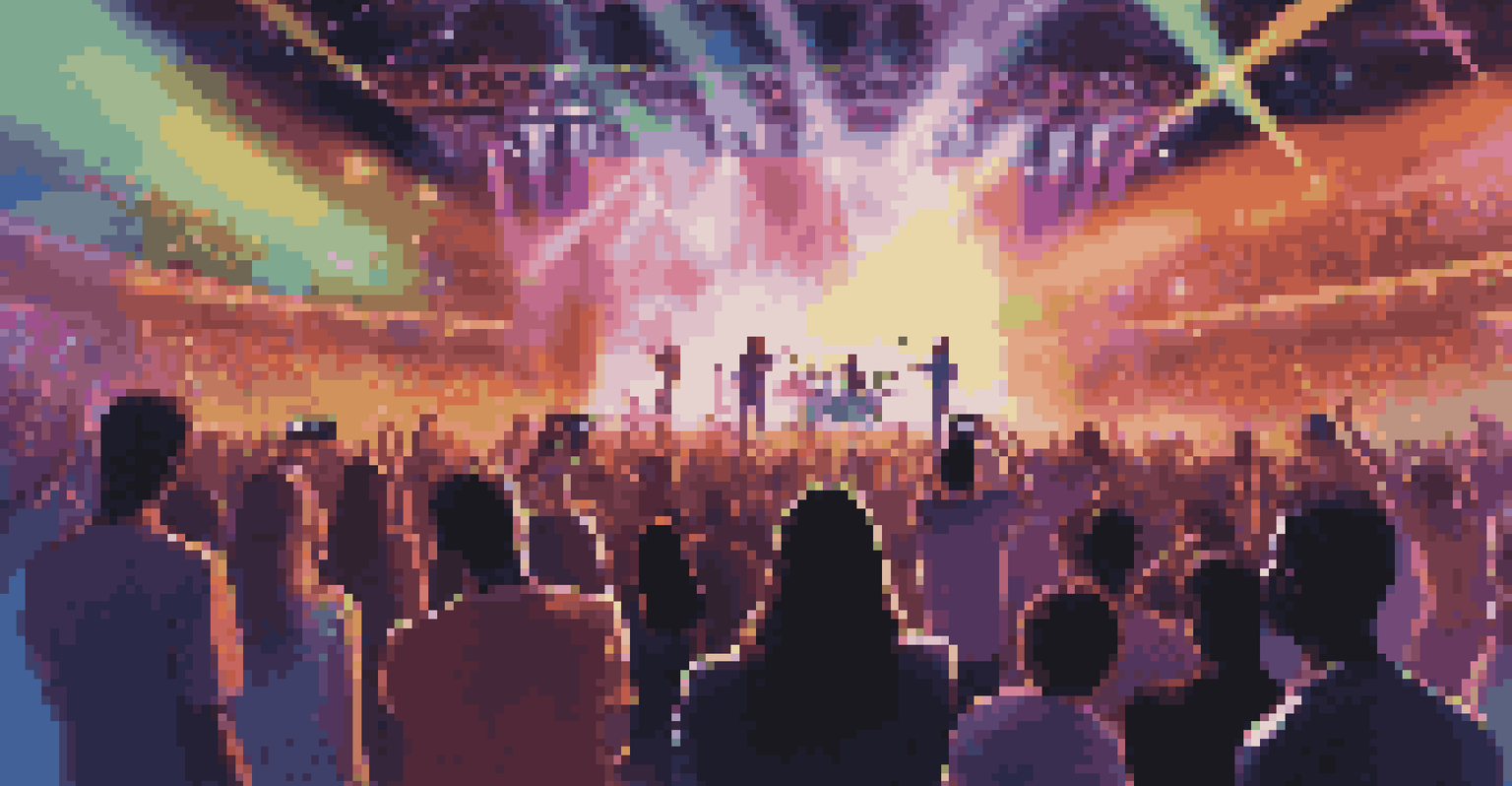The Influence of Music Streaming on Consumer Behavior

The Rise of Music Streaming and Its Popularity
In recent years, music streaming has surged in popularity, reshaping how we consume music. Services like Spotify, Apple Music, and YouTube Music have made it easier than ever to access millions of songs at our fingertips. This shift from physical albums and digital downloads to streaming has not only changed the industry but also how consumers interact with music.
Music is a higher revelation than all wisdom and philosophy.
With the convenience of playlists and personalized recommendations, listeners can discover new artists and genres without the commitment of purchasing an entire album. This ease of access has made music an integral part of daily routines, from working out to relaxing at home. As a result, streaming platforms have become the go-to source for music consumption.
Moreover, the social aspect of music streaming has also gained traction, with users sharing playlists and favorite tracks on social media. This community-driven approach encourages more engagement, making music a shared experience that influences consumer behavior significantly.
How Streaming Services Shape Listening Habits
Streaming services have revolutionized listening habits, promoting a more exploratory approach to music. Unlike traditional radio, where listeners are often at the mercy of the programming, streaming offers users complete control over what they listen to and when. This autonomy encourages users to venture beyond their usual tastes.

For instance, algorithms analyze listening patterns and curate personalized playlists, making it easy for users to discover hidden gems. These recommendations can introduce listeners to new genres or artists they might not have encountered otherwise. As a result, consumers are more likely to embrace diverse music styles.
Music Streaming Transforms Access
The shift from physical albums to streaming services has made accessing millions of songs easier, reshaping consumer interaction with music.
This constant exposure to new music not only influences personal preferences but also drives consumer spending patterns. Listeners may find themselves attending concerts or purchasing merchandise from artists they've recently discovered, further intertwining their music preferences with their purchasing choices.
The Role of Music Discovery in Consumer Behavior
Music discovery is a critical aspect of the streaming experience that significantly impacts consumer behavior. Playlists, curated by both algorithms and human editors, play a pivotal role in guiding listeners toward new music. This discovery process can create emotional connections, leading to more profound engagement with certain artists or songs.
Without music, life would be a mistake.
For example, a user may stumble upon a song in a carefully crafted playlist that resonates with them personally, prompting them to seek out more from that artist. This behavior can translate into increased support for the artist through streaming, purchasing albums, or attending live shows. The emotional impact of music makes it a powerful driver of consumer loyalty.
As a result, streaming platforms are not just about delivering music; they're about creating a journey of discovery that keeps listeners returning. This ongoing exploration shapes not only individual tastes but also broader consumer trends in the music industry.
The Influence of Playlists on Music Consumption
Playlists have become a vital component of the music streaming experience, influencing how consumers engage with music. They serve as curated collections that can evoke specific moods or themes, making them more appealing to listeners. Whether it’s a chill playlist for studying or a pump-up mix for a workout, playlists cater to various moments in our lives.
Moreover, the popularity of user-generated playlists has created a sense of community among listeners. When someone shares a playlist, it’s not just about the music; it’s about sharing an experience or a feeling. This social aspect encourages users to explore new tracks and artists, affecting their overall listening habits.
Playlists Drive Music Discovery
Curated playlists enhance music discovery, fostering emotional connections with artists and influencing spending behaviors like concert attendance.
The impact of playlists extends to consumer behavior in that they often lead to increased streaming of featured songs. If a track becomes popular in a widely-shared playlist, it can skyrocket an artist's visibility and sales, demonstrating the powerful influence of curated music experiences.
The Shift in Music Purchasing Behavior
As music streaming becomes the dominant form of consumption, traditional music purchasing behaviors are shifting. Many consumers now prefer to stream rather than buy individual tracks or albums, which has led to a decline in physical sales and digital downloads. This change reflects a broader trend toward access over ownership in various aspects of consumer behavior.
For instance, the concept of 'buying' music has evolved; instead of owning a track, consumers now prioritize the experience of accessing a vast library. This shift has implications for how artists monetize their work, leading to new models such as live performances and merchandise sales becoming increasingly important.
Consequently, brands and marketers must adapt to this new landscape, focusing on engagement rather than traditional sales strategies. Understanding that consumers are more likely to support artists through experiences rather than direct purchases can reshape marketing approaches in the music industry.
The Impact of Social Media on Music Streaming
Social media has become intertwined with music streaming, creating a dynamic that influences consumer behavior. Platforms like Instagram, TikTok, and Twitter allow artists to connect with fans directly, promoting their music in a more personal way. This connection can significantly impact the popularity of songs, as viral trends often lead to increased streaming.
For example, a catchy song featured in a viral TikTok dance can see a spike in streams almost overnight. This phenomenon highlights how social media acts as a catalyst for music discovery and consumption, making it essential for both artists and brands to engage actively with audiences online.
Social Media Fuels Music Trends
Platforms like TikTok and Instagram amplify the popularity of songs through viral trends, significantly impacting music streaming and consumer engagement.
As listeners share their favorite tracks or playlists on social media, they contribute to a community that values and supports music discovery. This interconnectedness between streaming and social media enhances consumer engagement, making it a powerful tool for shaping listening habits and preferences.
Future Trends in Music Streaming and Consumer Behavior
Looking ahead, the landscape of music streaming is likely to evolve even further, shaping consumer behavior in new ways. Emerging technologies like artificial intelligence and virtual reality promise to enhance the music experience, offering personalized interactions that go beyond current capabilities. For instance, AI could curate even more tailored playlists based on minute details in listening habits.
Additionally, the rise of immersive experiences, such as virtual concerts, may redefine how consumers engage with music. As technology blurs the lines between live performances and streaming, it could lead to increased emotional connections with artists and their work, ultimately influencing consumer spending.

These advancements will necessitate that brands and artists stay agile, adapting their strategies to meet the changing expectations of consumers. The future of music streaming will not just be about access; it will be about creating meaningful experiences that resonate with listeners on a deeper level.